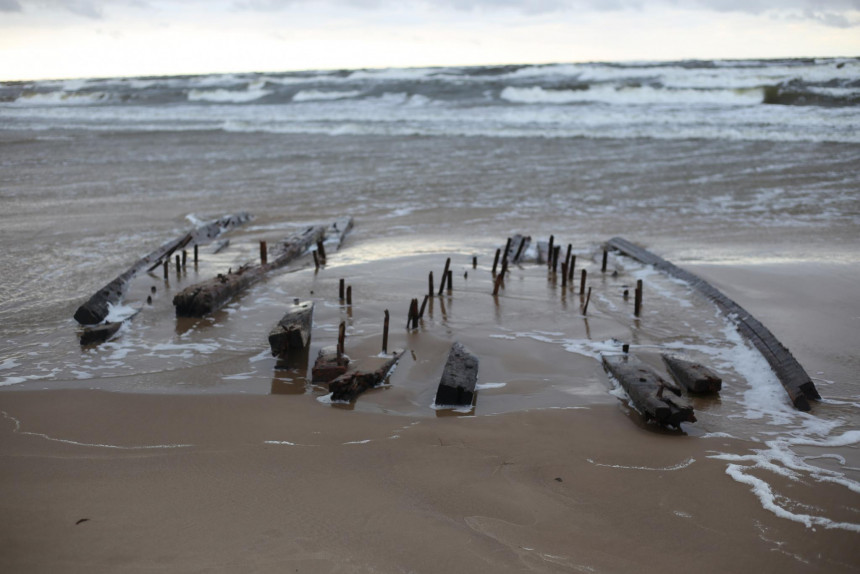Shipwrecks are emerging from the sea and demanding a museum

This autumn, parts of two historic shipwrecks were found in Daugavgrīva - one in the territory of the Freeport of Riga, the other floating free. The responsibility for one of the wrecks lies with the Freeport of Riga Authority, the other with the non-governmental organisation Bolderājas Grupa.
Two wrecks in one autumn
Asked about the finds, Sandra Jakušonoka, head of the Bolderājas Grupa, explains: "There has been inaccurate information in the media about the shipwreck fragments that have been found, which supposedly point to one ship, but it is now certain that the fragments are from two different ships. The ship under the responsibility of the Freeport of Riga Authority was more luxurious, while the ship under the responsibility of Bolderājas grupa was smaller and simpler."
Both shipwrecks were found in the estuary of the Daugava at Komētforts. "Our shipwreck was reported by locals as early as last autumn, the first time at the lighthouse, the second time opposite Rītabuļļi, where it was again covered and hidden by the waves and sand. This autumn it reappeared, so a decision had to be taken on the way forward."

It should be noted that in 2018, parts of another shipwreck were found around the same spot, so when faced with this challenge again, the people of Bolderāja already knew what to do. In cooperation with the National Heritage Board and the soldiers of the National Armed Forces' Motor Transport Support Center, the ship's parts have been transported to the casemates of Daugavgrīva Fortress, where optimal conditions have been provided for them. Small fragments will be handed over for further research to determine the time of construction of the ship - currently estimated to be the 17th-19th century, as it is fastened with both wooden pins and iron nails. Parts of two shipwrecks are now in the casemates, while the wreck managed by the Freeport of Riga Authority is again under the sand. Sandra Jakušonoka explains: "The Freeport of Riga Authority acted very prudently - they dug up the wreck, surveyed it and buried it under the sand again. As far as I know, next year the next steps will be taken to preserve this historical testimony. Wood that has been underwater for centuries should not be exposed to large changes in temperature and humidity - it will crack and crumble if it dries quickly."
The vast casemates of Daugavgrīva Fortress, on the other hand, are very suitable for storing such objects - they are constantly ventilated, are not exposed to direct sunlight and have an almost constant air temperature.
The public demands a maritime museum
The three pieces of shipwrecks found in the last three years are all saying, "We need a place of our own." The Maritime Museum would love to take over the wrecks, but it has no suitable storage space for such objects. Daugavgrīva Fortress, with its vast casemates and the Komētforts connected with the Fortress, would be an excellent place to create a new cultural environment, including a Maritime Museum. However, the Daugavgrīva Fortress is still in an uncertain situation - the Privatisation Agency is still the owner. The Riga City Council has not decided to take possession of the fortress. For the time being, the fortress is supervised by the association Bolderājas Grupa, which prevents the removal and demolition of the fortress buildings within its means, but there is no funding for the development of the site. "We can see that not only the inhabitants of the neighborhood, but also others are very interested in the fortress - people want to know both about the buildings and about the processes that have taken place here. There is also a special atmosphere here, which is very suitable for events, creative activities, a museum and many other things. Let us look at the example of the Daugavpils Fortress - it is undeniable that the municipality has invested a lot of money in its restoration, but we can already see how one such object can change the whole environment, attracting tourists and artists from all over the world. We believe that the wrecks emerging from the depths are a sign that Daugavgrīva Fortress needs to be reborn."

*****
Be the first to read interesting news from Latvia and the world by joining our Telegram and Signal channels.
